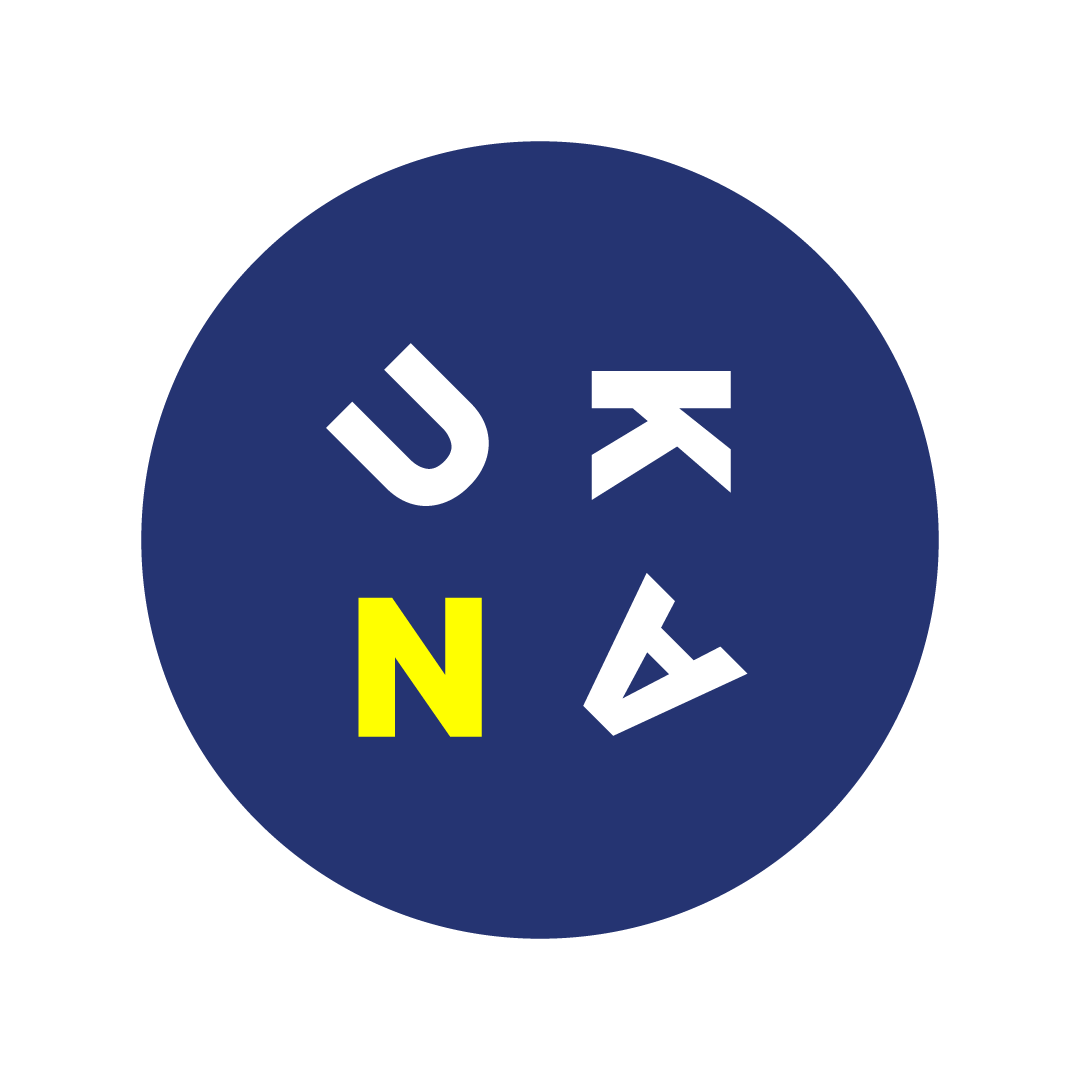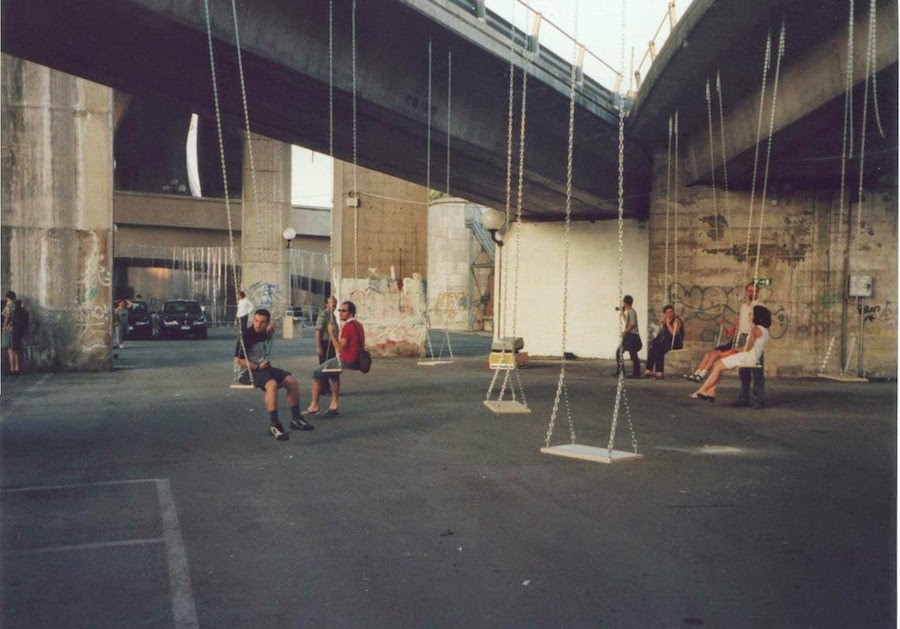Claudio Zecchi Interviewed by Guilia Morucchio for ATP Diary
Tsubasa Kato, Black Snake, Video, 2017, Courtesy MUJIN-TO Production and The Artist
*Interview by Giulia Morucchio, translated from Italian. Originally posted on ATP Diary.
Claudio Zecchi is an independent curator whose research is focused on investigating the relationship between art and public space.
Since 2014 he has been conducting Practices as an Intersection in a Fragile Environment , a traveling debate platform aimed at understanding, in a state of cultural nomadism, new visions and readings of the public sphere analyzing the reciprocal relationship between practices - artistic, curatorial and institutional -, the territory and local communities. The project started in Milan, at the Fabbrica del Vapore , and then moved to New York hosted by Residency Unlimited (2015), at the New Art Exchange of Nottingham (2016) and finally in São Paulo within the research program offered by the cultural center PIVÔ (2017).
Zecchi has been residing in Japan for a few weeks, at the TOKAS - Tokyo Arts and Space , to develop the fifth chapter of this research.
> Performative practices - Supercommunity (Practice # 5_Tokyo)
ATP. What is the path that led you to develop the project Practices as an Intersection in a Fragile Environmenteq ual are the goals of this multidisciplinary platform?
Claudio Zecchi. My curating path starts from a public art project - Cantieri d'Arte / La Ville Ouverte - in which I worked from 2006 to 2013 together with Marco Trulli. After about seven years, and with the change in global economic conditions that have affected not just the previous approach to work, and other curatorial experiences such as 16 in edition of the Mediterranean Biennial ( Errors allowed, Ancona, 2013) that I had the pleasure of co-curating with a group of international curators (Charlotte Bank, Alessandro Castiglioni, Nadira Laggoune, Delphine Leccas, Slobodne Veze / Loose Associations (Nataša Bodroži, Ivana Meštrov) and Marco Trulli), I felt the need to change by shifting the previous approach, based mainly on the commissioning and production of works in public space, towards a "lighter", more discursive and predominantly empirical research project in the field, deciding to move myself in different territories.
ATP. Could you tell us about your research methodology? In particular, you work in a programmatic way and then you have already decided how many and which topics you want to deal with and on the basis of these you choose the territories in which to develop these surveys, or the issues that you face emerge from time to time and are related to the city and the community with whom will you go to work?
CZ: The great theme I investigate is always that of the relationship between art and the public sphere, even if the precise focus I understand when I am in the territories, listening to and observing the places, the dynamics that underlie them and the practices of professionals with whom dialogue. The project is always the result of months of on-site conversation with artists, curators, researchers, institutions and communities, with the aim of unearthing and encouraging the presence of critical thought spaces and potential outcomes generated by the speech itself. If you want a perfect excuse to investigate what we could define as the economy of relationships.
For this reason, there is a methodology common to all the chapters discussed so far but there can not be a format, a univocal model. Indeed, these are rediscussed from time to time by trying to renegotiate the boundaries of curatorial practice and investigate new languages. It is no coincidence that this project, in the previous four chapters, has dealt with different issues that have been resolved, even formally, in a different way.
I always try not to anticipate too much the research but to work as much as possible directly on the spot by not constraining the starting conditions towards a direction that can generate predetermined choices, also because everything you can think of happens, in reality it never happens. You have to go to the cities, you have to give yourself time, which is the time of research, of the discovery, of the loss, the time to give shape to things and then, if you succeed, you get out of the results.
In this sense I am an activator, I also let the process escape me a bit from the hands just because, as I told you, I do not care to work on pre-established formats. I take the risk and the freedom to fail. For me this is a very important thing, from the methodological point of view. So far, the four topics I have discussed have also had a final objectification even if this is not necessarily an obsession.
This is an eventuality that clearly generates problems also from the point of view of economic support of the project, because it is evident that when you do not offer the certainty of an outcomefor those who support you it becomes complicated. Fortunately, those who have done so until now (like the BJCEM from the beginning, and more recently the UK network UK Young Artists, or even Ramdom) did so even on the basis of a credit of trust to me.
Chim Pom, Black Of Death, "So See You Again Tomorrow, 2016" Courtesy of the artist and MUJIN-TO Production, Tokyo, photoKenji Morita
ATP. Can you briefly tell us about the past stages of your research?
CZ: The first episode of this research was developed in Milan at the Fabbrica del Vapore near the Isola district. In this context I investigated the relationship between art and activism, through a performance lecture entitled Rises and falls of art politic of the duo of Croatian artists Fokus Grupa; the screening of the film The Infiltrator by the Palestinian artist Khaled Jarrar; a wide-ranging reflection on the theme of urban space with the A12 Group and the curator Francesca Guerisoli. Finally I made, in collaboration with the collective Isola Art Center, which at the time was developing a project called Isola Utopia, a discussion table with the activists of the busy RiMaflow Factory on the theme of concrete utopias, coordinated by Bert Theis.
In New York, on the other hand, I made an argument that translated into three different panel discussions on the roles of the artist, the curator, the institutions and the institutional models. These were attended by Gabriela Albergaria, a Portuguese artist who lived in NYC at the time, and Andrea Nacciarriti, an Italian artist who was then the winner of the NY prize and in residence at the ISCP. Then with Todd Shalom (Elastic City), Ayelet Aldouby (Xlerateart), Alice Mallet (independent curator) and Alessandro Facente (independent curator at Artists Alliance Inc.) we dealt with the subject of the curator; finally with Sebastien Sanz de Santamaria (co-founder of Residency Unlimited and co-founder of Rate my Artist Residency) Joy Glidden (cultural manager),
The following year, in Nottingham, I focused on the theme of language working for three months with professionals (artists, curators, directors of institutions) and some small communities in the city's neighborhood. At the end of the three months I realized that in these conversations some words were constantly repeated. I deliberately selected three - language, long vs. short term and sharing - around which I invented a game with precise rules, asking all the people with whom I had talked until then to play during a public event which was held at the New Art Exchange. Subsequently, a book entitled Public Sphere: Process and Practices was also published made together with Roberto Memoli.
Finally the project realized in São Paulo. Here the theme could only be that of the city in its architectural and urban coordinates. São Paulo is a very complex city (like all of Brazil right now), a city so present that, as Tuca Vieira told me, one of the artists I have involved, wherever you are in the center, you are always surrounded by it. You can not escape it and you can hardly place yourself. This makes it an illegible city that can only be returned through a disjointed and fragmented vision. As the title of this chapter says, borrowed from an exhibition by Mauro Restiffe in 2012 at the Instituto Moureira Salles of Rio de Janeiro São Paulo, Fora de Alcance (São Paulo, Out of reach), it is an impregnable city.
So, I decided to return a city without certainties, rather than exceptions, preclusions, contradictions, inconsistencies and contradictions. To do this I worked with about twenty professionals including visual artists, curators, urban planners, architects, journalists, collectives, anthropologists and sociologists producing a bulletin published by Droste Effect in which the various interventions (photos, texts, posters, etc.) are They were put together as a kind of collage in the same chronological order in which they arrived.
If in the first two chapters the title of the project was Practices as an Intersection in a Fragile Environment and the name of the city that hosted it, the third and fourth took two different titles. For me the title acts as a great hat under which this research is taking shape: it is a long title, which does not resolve itself in a joke, and that forces you to stop and renegotiate the notion of time, no longer the time of immediate consumption, but a long time that then is precisely that of research. A title so articulate forces you to read, is a way to say something from the beginning, forcing you to think about individual words.
Group A12, Swing, Installation, Out of use, Pescara, 2000, Courtesy the artist
ATP. Can you talk about how you work with the artists but also with the communities a local who from time to time engage in your research?
CZ: A fundamental thing is that in this project we always start from the practices and works of artists or other professionals with whom I establish dialogue dynamics and there is never a reasoning that starts in a predetermined form from abstraction, from theory . As I told you I'm an activator ...
ATP. You recently arrived in Tokyo for a new episode of your research. What will happen à in the Japanese capital in February and March?
CZ: I recently arrived in Tokyo, where I will be a guest at TOKAS - Tokyo Arts and Space for the internal research program, but I immediately started working with local artists and institutions.
Here I will focus on the artist as a generator of participatory work processes (which in some cases also become shared), much felt especially after the Fukoshima disaster of March 2011, although there is no such clear demarcation line but rather an atmosphere .
The artists I have so far involved are: Chim ↑ Pom, Tsubasa Kato, Ishu Han and Tetsuro Kano. In a manner, and with completely different times, their work generates, produces and requires participation. Other artists that I consider interesting and that I would like to involve in the future, such as Takayuki Yamamoto, who activates participation through experimental educational processes, are living abroad at the moment.
In the meantime, I will continue to use my blog as a tool for documentation and reflection on my research here in Tokyo, but I hope to publish a more structured reasoning or interviews soon.
Tuca Vieira, Atlas Photographic, Mapa-index, 2016, Photo Courtesy The Artist
Original source: http://atpdiary.com/practices-as-an-intersection-in-a-fragile-environment-intervista-a-claudio-zecchi/




